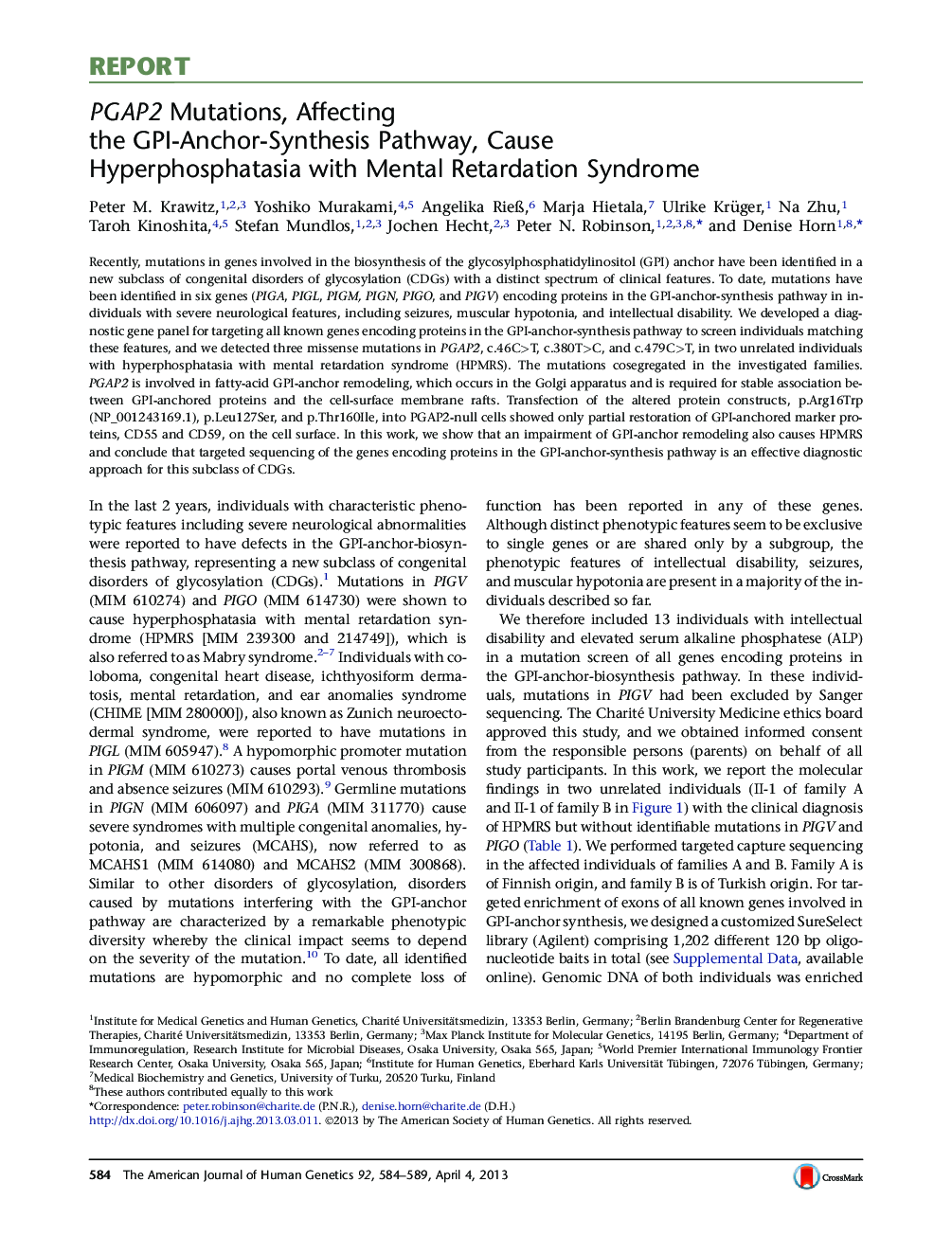| Article ID | Journal | Published Year | Pages | File Type |
|---|---|---|---|---|
| 2811428 | The American Journal of Human Genetics | 2013 | 6 Pages |
Recently, mutations in genes involved in the biosynthesis of the glycosylphosphatidylinositol (GPI) anchor have been identified in a new subclass of congenital disorders of glycosylation (CDGs) with a distinct spectrum of clinical features. To date, mutations have been identified in six genes (PIGA, PIGL, PIGM, PIGN, PIGO, and PIGV) encoding proteins in the GPI-anchor-synthesis pathway in individuals with severe neurological features, including seizures, muscular hypotonia, and intellectual disability. We developed a diagnostic gene panel for targeting all known genes encoding proteins in the GPI-anchor-synthesis pathway to screen individuals matching these features, and we detected three missense mutations in PGAP2, c.46C>T, c.380T>C, and c.479C>T, in two unrelated individuals with hyperphosphatasia with mental retardation syndrome (HPMRS). The mutations cosegregated in the investigated families. PGAP2 is involved in fatty-acid GPI-anchor remodeling, which occurs in the Golgi apparatus and is required for stable association between GPI-anchored proteins and the cell-surface membrane rafts. Transfection of the altered protein constructs, p.Arg16Trp (NP_001243169.1), p.Leu127Ser, and p.Thr160Ile, into PGAP2-null cells showed only partial restoration of GPI-anchored marker proteins, CD55 and CD59, on the cell surface. In this work, we show that an impairment of GPI-anchor remodeling also causes HPMRS and conclude that targeted sequencing of the genes encoding proteins in the GPI-anchor-synthesis pathway is an effective diagnostic approach for this subclass of CDGs.
